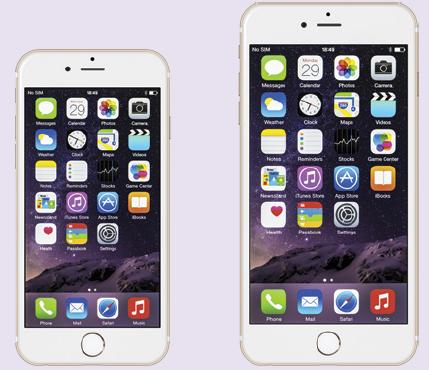When we first started using mobile phones in Australia back in the early 1990s, one of the
Question:
When we first started using mobile phones in Australia back in the early 1990s, one of the first to appear on the market was the Motorola ‘brick’. This was a very heavy phone and the joke doing the rounds at the time was that it was more useful as a weapon to deter potential muggers. Nonetheless, it did work rather well, but was considered too big to be easily carried around. Nokia quickly capitalised on this drawback and began producing a range of much smaller phones. Interestingly, Nokia phones are manufactured in Finland, a country about the size of the city of Chicago, by a company that specialised in gumboots and rubber products, forestry, cable, electricity and electronics. Yet, Nokia knocked Motorola off its perch and became the number one mobile phone seller for a long time. One imagines the strategists at Motorola engaging in groupthink and dismissing the threat of Nokia by saying ‘How can a company that manufactures fishermen’s boots compete with our quality product?’
Motorola was indeed a quality product. Its fundamental objective was total customer satisfaction and this was every employee’s overriding responsibility. In addition, Motorola disliked flaws and considered that anything that dissatisfied either an external or internal customer should be treated as a defect. A dialogue would then be entered into between management and staff or staff and customers in order to fix the defect. But this could not prevent the Finnish mobile giant from dominating the world and Australian markets for more than a decade. Nokia ended Motorola’s reign in the late 1990s and, by 2008, its market share in Australia was 71 per cent, while Apple’s was only 8.4 per cent. As recently as the first quarter of 2010, Nokia’s market share in Australia was still about 50 per cent. But, as we note in this chapter, change is the only constant. By the first quarter of 2011, Nokia’s market share had plunged by half that, to just 24.6 per cent. By 2011, Nokia had lost its crown to Apple. What went wrong for Nokia? (Or, rather, what went right for Apple?)
Apple has always been one of the most innovative companies on earth. It started off as a computer company but struggled to wrest market share from Microsoft (even though graphic designers and finished artists in advertising agencies are said to ‘like their PCs but love their Apples’). Unable to compete as well as it wanted to in the computer industry, Apple simply decided to switch games and produced an incredible mobile phone. What made this phone so desirable — a ‘must have’? Besides being able to actually make telephone calls and send text messages (which is what mobile phones were originally meant to do), the iPhone enabled video calling (known as ‘face time’), a retina display, two cameras for two views, multitasking, HD video recording and editing, and a 5 megapixel camera with flash. Of course, it also facilitated access to email and the internet (including Facebook, iTunes and iBooks), as well as maps, a GPS function and other features just too numerous to mention. Each new model of the iPhone is even more sophisticated and it seemed as if Apple was set to dominate the market for a long time to come. But will it? In mid‐2015 Samsung asserted its dominance as the smartphone leader. In order to regain its place as number one, Apple will have to change quickly with the times — or, like Motorola and Nokia, it, too, will be dominated by another competitor. Samsung is already dominating, while Huawei waits in the wings.
QUESTION
Change or be changed — that’s what Apple has to do. Can you think of some exciting additional features that Apple could add to give its iPhone the ‘edge’ over its competitors?
Step by Step Answer:

Management
ISBN: 9780730329534
6th Asia Pacific Edition
Authors: Schermerhorn, John, Davidson, Paul, Factor, Aharon, Woods, Peter, Simon, Alan, McBarron, Ellen





